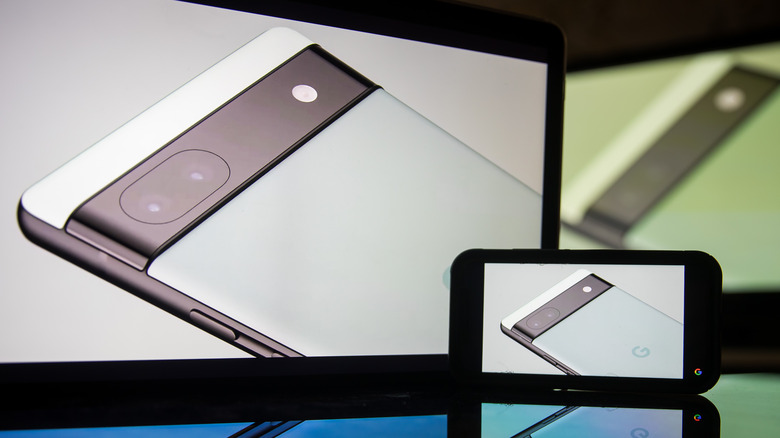Pixel 6a Teardown Reveals A Big Feature That Didn't Make The Cut
Pre-orders for Google's mid-range flagship have finally arrived, but it won't start shipping to eager buyers until July 28. Of course, a few units have already made their way to a limited number of users, including reviewers, pundits, and even repair technicians. While most people will probably be eager to hear about how the Pixel 6a performs, others might be more curious about how the phone will actually survive life's usual accidents. More importantly, these people also want to know how difficult or expensive it would be to repair a broken Pixel 6a. Teardown videos try to answer those latter questions, but they also tend to uncover hidden or canceled features, as in the case of the Google Pixel 6a.
Continuing its tradition of launching A-series phones, Google revealed the Pixel 6a last month as the more accessible version of its Pixel 6 flagship. The two share the same design DNA, sporting a distinctive visor near the top. They also run on the same Google Tensor processor, but everything else starts to differ from there. There are, of course, also differences in the materials used to build the Pixel 6a. PBKReviews reveals that the Pixel 6a's back plate is made from a very bendy piece of plastic, at least when it's separated from the rest of the frame. While not as premium as glass, the material is at least more resilient to drops and scratches. That, however, isn't the end of other interesting finds.
It seems one big Pixel 6a feature was nixed
The most curious detail that the teardown reveals is a large cutout in the middle of the Pixel 6a's frame. This cutout is just the right size for a wireless charging coil, but that doesn't exist inside the phone. It's quite possible that Google decided at the last minute to remove wireless charging support but was too late to change the design. It's definitely a shame, considering how the Pixel 6a has pretty much all the necessary parts to support that feature except for the missing coil.
The teardown gives the Pixel 6a a rating of 7 out of 10 in terms of repairability. It's easy enough to open up the phone without breaking anything in the process thanks to reinforcement clips that hold the screen down and a plastic back that won't crack with pressure. Even the battery was easy to remove using the pull tab, a marked improvement over the heavily glued battery of the Pixel 6 Pro. Most of the parts are modular and standard, which means they could be replaced easily, but there are also a few gotchas that prevented it from getting a higher score.
The USB-C port, for example, is soldered onto the motherboard, which means it won't be easy to repair or replace. Considering it's one of the parts that gets worn out sooner than others, that's a real downer. The in-display fingerprint scanner is also glued tight to the screen, but fortunately, it's not one that gets damaged easily. Overall, it's a significant step up in terms of repairability, but it might be a trait limited to Google's less expensive handsets.
